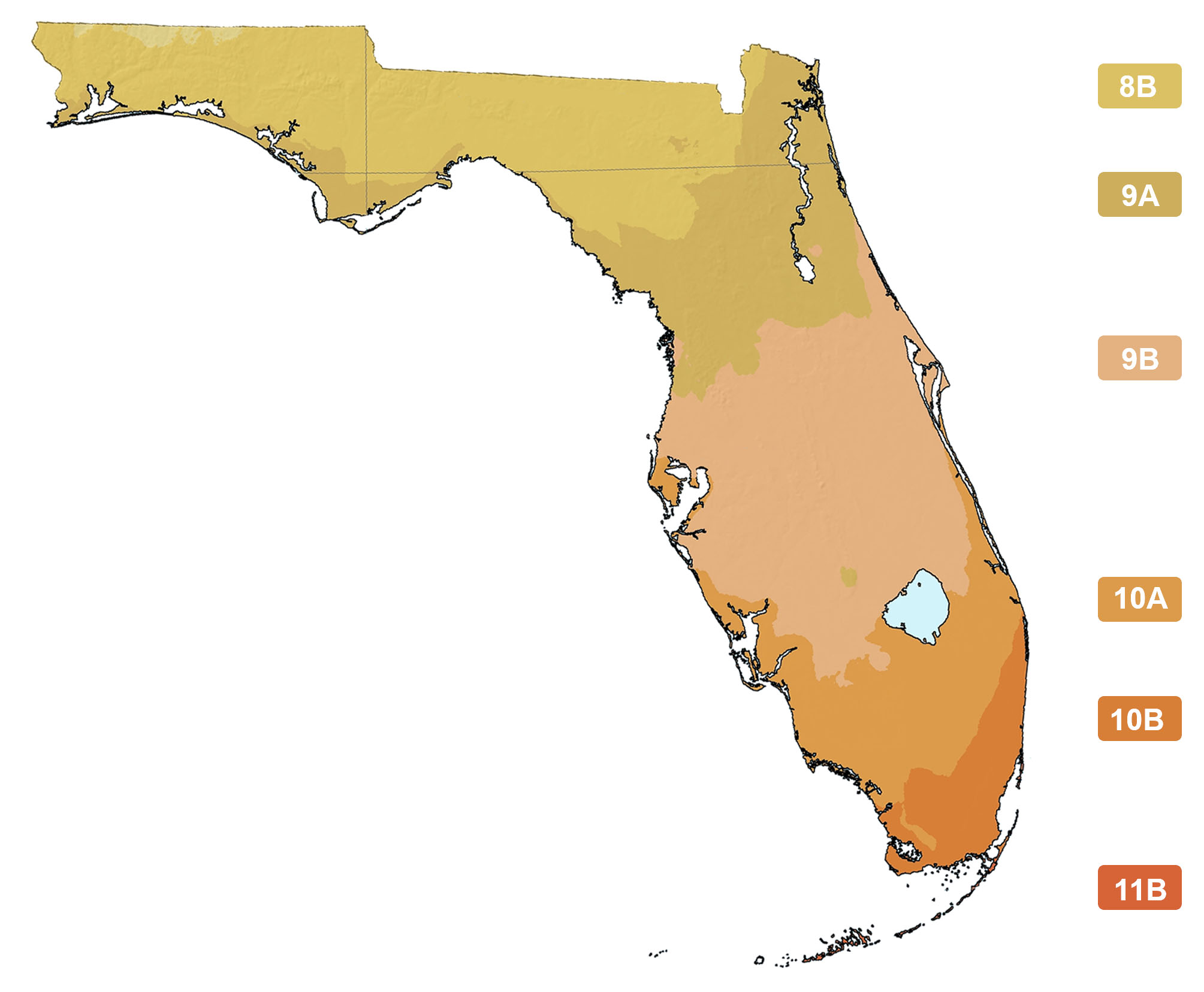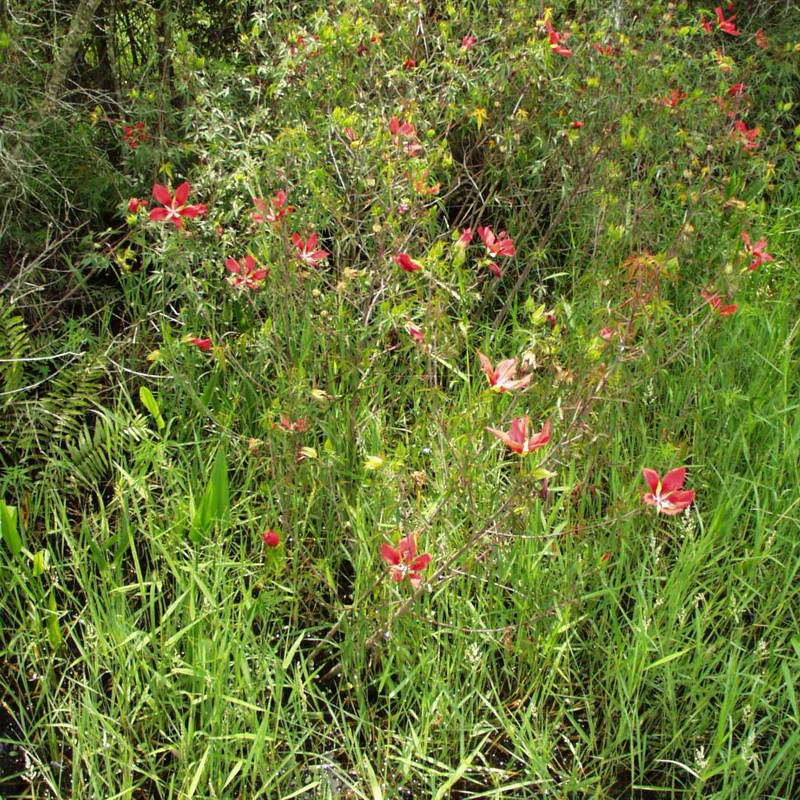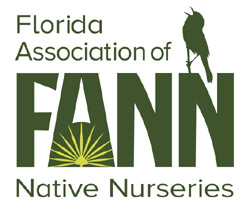Hibiscus coccineus
Photographs belong to the photographers who allow use for FNPS purposes only. Please contact the photographer for all other uses.
Scarlet Hibiscus
Malvaceae
Plant Specifics
| Form: | Flower | |
| Size: | 5-8 ft tall by 2-4 ft wide | |
| Life Span: | Long-lived perennial | |
| Flower Color: | White,red | |
| Fruit Color: | Brown | |
| Phenology: | Winter dormant. Blooms spring-summer. | |
| Noted for: | Showy flowers, Interesting foliage |
Landscaping
| Recommended Uses: | Specimen plant in moist areas. There is also a white-flowered variant. | ||||||||||||||||||||||||||||||||||||||||||
| Propagation: | Seeds or division of roots. Seeds need some form of scarification (such as scraping with a file) | ||||||||||||||||||||||||||||||||||||||||||
| Availability: | Native nurseries, FNPS plant sales | ||||||||||||||||||||||||||||||||||||||||||
| Light: | Full Sun, Part Shade | ||||||||||||||||||||||||||||||||||||||||||
| Moisture Tolerance: |
always floodedextremely dry |
||||||||||||||||||||||||||||||||||||||||||
| (Aquatic ----- to ----- Somewhat moist, no flooding) | |||||||||||||||||||||||||||||||||||||||||||
| Moisture Tolerance: | Aquatic ----- to ----- Somewhat moist, no flooding | ||||||||||||||||||||||||||||||||||||||||||
| Salt Water Flooding Tolerance: | Not salt tolerant of inundation by salty or brackish water. | ||||||||||||||||||||||||||||||||||||||||||
| Salt Spray/ Salty Soil Tolerance: | Low/no tolerance of salty wind or direct salt spray | ||||||||||||||||||||||||||||||||||||||||||
| Soil or other substrate: | Loam, Organic material (muck) | ||||||||||||||||||||||||||||||||||||||||||
| Soil pH: | |||||||||||||||||||||||||||||||||||||||||||
Ecology
| Wildlife: |
Attracts hummingbirds. | |
| Insects: |
| |
| Native Habitats: | Wet sites. Strands, sloughs, swamps, brackish and freshwater marshes; commonly in water. |
Distribution and Planting Zones
Natural Range in Florida
USDA Zones
Suitable to grow in:
10A 10B 8A 8B 9A 9B

USDA zones are based on minimum winter temperatures
Comments
| General Comments: | Its deeply divided leaves look somewhat like marijuana leaves(Cannabis spp.). |







